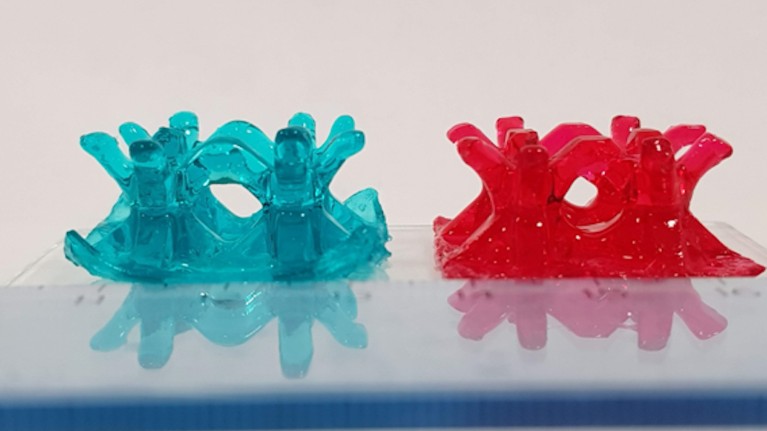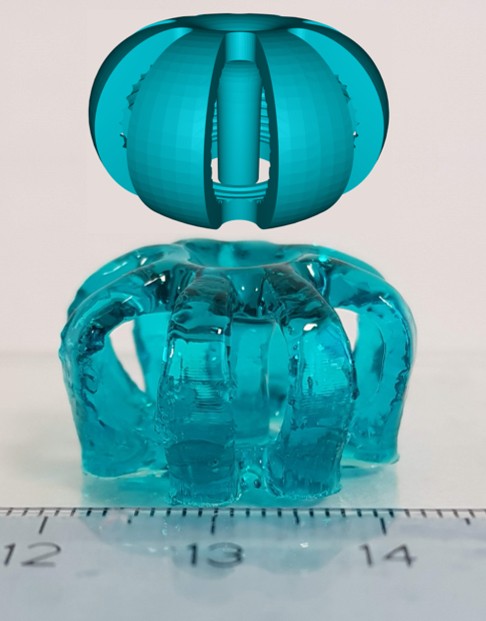Two lattice-like hydrogel structures printed with red and brilliant green dyes for better visual comprehension. Credit: Matteo Caprioli, Politecnico di Torino. 
Hydrogels are elastic, soft materials made of interlinked polymer chains. They contain large amounts of water, but behave like solids, and can be 3D-printed into various shapes. They can be used as scaffolds that support the growth of cells and blood vessels, to heal or replace tissues such as skin, cartilage and bones. But several factors limit their application. In order to replace real living tissue, they would need to self-heal to extend their lifetime, and it should be possible to use them to recreate the complex architectures made by real cells. Self-healing can be achieved by tweaking the chemical structure of the hydrogels, so that broken bonds in the network of polymers can be fixed by forming new bonds. But although 3D printing of hydrogels with either self-healing properties or complex architectures is not new, no-one had yet found a way to do both things simultaneously.
The team led by Candido Fabrizio Pirri, a professor of physics at Politecnico di Torino, has done it using only commercially available materials and keeping the cost to a minimum. In the study published in Nature Communications1, the scientists describe a novel water-based formulation for the hydrogel used as ‘ink’, which they fed to a DLP printer. This machine 3D-prints objects by depositing one slice at a time, and uses ultraviolet or visible light (instead of air) to solidify the material before starting a new slice. “I’ve worked with light for all my scientific career” says co-author, Ignazio Roppolo, also from Politecnico di Torino. “I find it magic to have something liquid, shine a light on it and make it become solid”.

Axisymmetric structure with central pillar printed with brilliant green dye. Credit: Matteo Caprioli, Politecnico di Torino.
The technique has a greater versatility and accuracy than conventional (or extrusion-based) 3D printing. It allows the design of more complex shapes and guarantees that the final result is faithful to what designed on the computer, even when using sticky and water-based materials.
The group was able to print structures such as a tube, a spherical shape with smooth rounded surfaces and a central pillar with flat surfaces (pictured), various combinations of straight elements, clean and sharp edges. Even objects with overhanging features and through-holes could be printed without support. And all these structures can self-heal after cutting, simply by placing the two broken parts in close proximity. In addition to regenerative medicine, such self-healing structures could have applications for wearable sensors, robotics and energy harvesting, “This is only the first step” says Roppolo. “From now on there are plenty of opportunities for those materials”.
